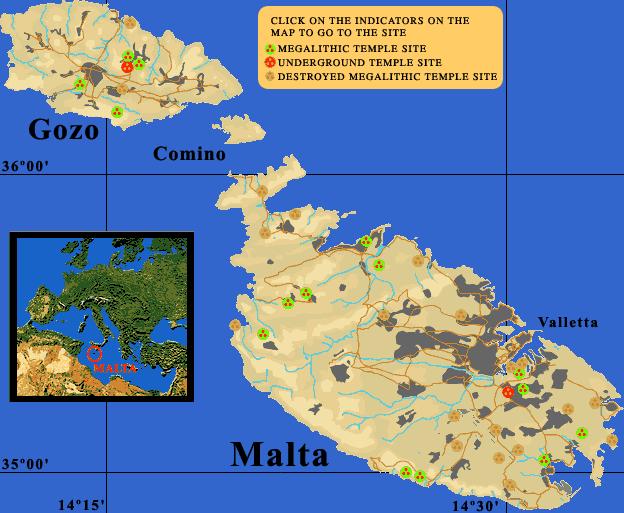


What is evident is that the seaside areas of Malta have changed drastically since the temple building period, and we can not gain a clear understanding of this period without seriously investigating these shallow areas. It is also where I would look for cart ruts, since these tie these areas together as a continuous land mass occupied by the same people. Clearly the deeper these ruts are found beneath the sea, the stronger the argument becomes that they date from a much earlier period than we might otherwise suppose. Also, wherever we find the ruts beneath the sea, we can also expect to find the human constructions they served. Also given that much of this land flooded relatively quickly, we may find the prehistoric structures in surprisingly good shape, protected by the sea, and out of man's reach since soon after they were built. But 30 sq km is a large area to search and prehistoric sites are not easily identified.
The Megalithic Temples of Malta.

Gozo Stone Circle - Rediscovered.
From 1828:. One of the water-colour pictures of great interest shows the excavation at the Stone Circle while in progress.


THE KEY TO ATLANTIS COULD BE A LOT OF BULL.


In addition to breeding Wenzu, who is 96% pure genetically, the Malta Cattle Foundation has extracted and preserved the DNA of the last pure (100%) Maltese ox so that it can be compared with that of similar animals found around the Mediterranean. It is hoped that comparative studies of the DNA of oxen in Malta/Gozo, Crete, Cyprus, Egypt and Sicily will yield valuable information on the origins and movements of early settlers and their livestock through the ancient Mediterranean.